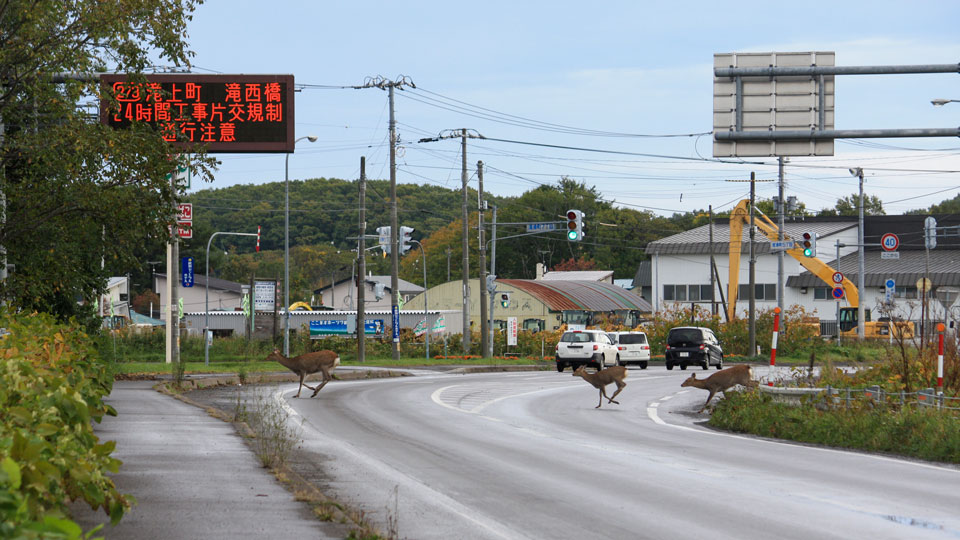Deer cause 10 car crashes a day
A crash in October involving a van and a truck in eastern Hokkaido's Shibecha Town left two people dead and one seriously injured. Investigators suspect a deer jumped onto the road and struck the van, which veered into the truck's path.
In another crash in November, five people were injured when three cars piled up due to a deer on the road.
Traffic accidents involving deer are increasing in frequency in Hokkaido. Local police report that a record 4,000 crashes took place last year, which works out to more than 10 a day. And it is not just a problem in rural areas, with the prefectural capital of Sapporo also seeing a large number of deer-related collisions.
It is not clear what is behind the increase. Researchers have suggested a number of causes, including a rising deer population. There are fewer hunters than before, and as development encroaches on wild forests, the animals are closing in on more populated areas.

An expensive encounter
In addition to trauma and personal injury, motorists can face hefty repair bills to fix damaged vehicles. Some insurance does not cover accidents involving wild animals.
A survey conducted last year by the General Insurance Association of Japan found the average payout in cases involving deer was more than $4,000 dollars.
Travelers who plan to rent a car in Hokkaido are advised to pay close attention to what is covered by their insurance.

How to avoid a collision
Many crashes involving deer occur during late autumn, with about 40% of the total number of incidents recorded in October and November. Animal behavior experts say that time of year is mating season, when deer become more active.
Evening is the most dangerous time to be on the road. Police are calling on drivers to slow down and use high-beam headlights so they can more easily spot deer.
Associate Professor Igota Hiromasa of Rakuno Gakuen University has studied Ezo deer. He says drivers should know that if a deer crosses, another is likely to follow.
Even if no-one is injured, any road incident involving a deer must be reported to police. Igota warns people not to get close to an injured deer as it may attack using its antlers or legs. He adds that the animals should not be touched with bare hands as they can carry tick-borne infectious diseases.

A problem for roads and railroads
Hokkaido Railway Company says its trains are frequently delayed or services suspended due to deer collisions. A record 2,600 cases occurred last fiscal year.
The railroad operator has taken preventive measures such as building fences and cutting trees and foliage to enable drivers to more easily spot the animals.
Tourists return
As domestic and foreign tourist numbers rise, travelers will be visiting Hokkaido in increasing numbers. Many of them rent vehicles, or take the train, to make their way around the island.
Seeing wild animals in their natural habitat is one of Hokkaido's attractions, and authorities want to ensure such encounters are safe and enjoyable for visitors. They hope that awareness and safe driving can help prevent some of the crashes that can not only ruin a holiday, but also sometimes cause injury or even fatalities.

